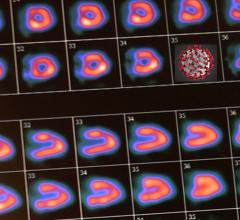
April 6, 2009 — Baylor College of Medicine (BCM) is using optical molecular imaging technology from Carestream Molecular Imaging to advance the study of diseases and therapies involving cancer, cardiovascular disease, infectious agents, inflammatory disease and other conditions.
The company’s KODAK In-Vivo Multispectral Imaging System FX is installed at BCM’s Frensley Center for Imaging Research, which uses imaging to support development of novel agents and other research tools used in the detection and treatment of diseases. Researchers apply the system to a wide variety of imaging techniques that combine optical and X-ray, as well as other modalities such as PET and SPECT isotopes.
“The KODAK Multispectral System combines optical, X-ray and nuclear imaging, allowing us to more precisely localize the molecular signals in vivo — based on the co-registered multi-imaging modalities,” said Shi Ke, M.D., technical director of the Frensley Center for Imaging Research, Baylor College of Medicine. “I believe optical molecular imaging has a bright future, because it will offer more target-specific agents in the light spectrum with accuracy and specificity for disease detection than current PET metabolic agents.
“Optical molecular imaging also delivers the ability to simultaneously test multiple disease markers. Since it usually takes 24 to 48 hours to get results from each test, this will greatly speed disease identification and allow treatment to begin more quickly,” said Dr. Ke.
The Frensley Center for Imaging Research emphasizes the combination of chemistry and biology research. Its mission is to serve the imaging research interests of the basic science and clinical faculty. It also focuses upon industrial collaboration with key device, drug, and imaging partners to bring imaging and therapy advances to the clinic and benefit patients.
For more information: http://mi.carestreamhealth.com


 August 03, 2023
August 03, 2023 








